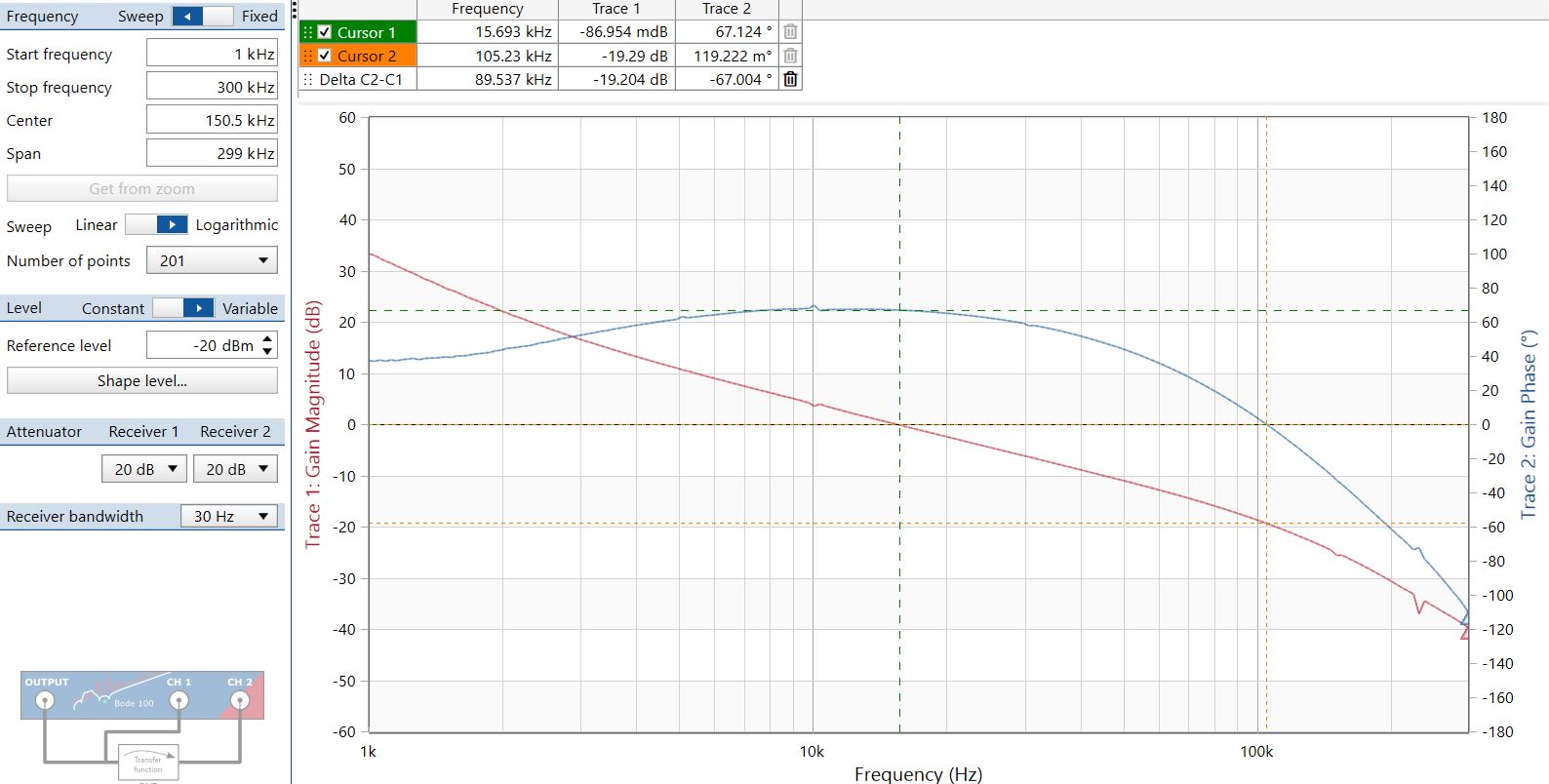TIDT279 October 2022
2.3 Bode Plots
Figure 2-11 through Figure 2-13 show the bode plots with 14 VIN for 3.3-V, 5-V, and 8-V outputs respectively.

Crossover at 32 kHz with 51 degrees
of phase margin, –180 degrees shift at 86 kHz with 14-dB gain margin
Figure 2-11 3.3-V, 3-A Bode Plot off 14
VIN
Crossover at 16 kHz with 67 degrees
of phase margin, –180 degrees shift at 105 kHz with 19-dB gain margin
Figure 2-12 5-V, 120-mA Bode Plot off 14
VIN
Crossover at 10 kHz with 49 degrees
of phase margin, –180 degrees shift at 31 kHz with 14-dB gain margin
Figure 2-13 8-V, 600-mA Bode Plot off 14
VIN